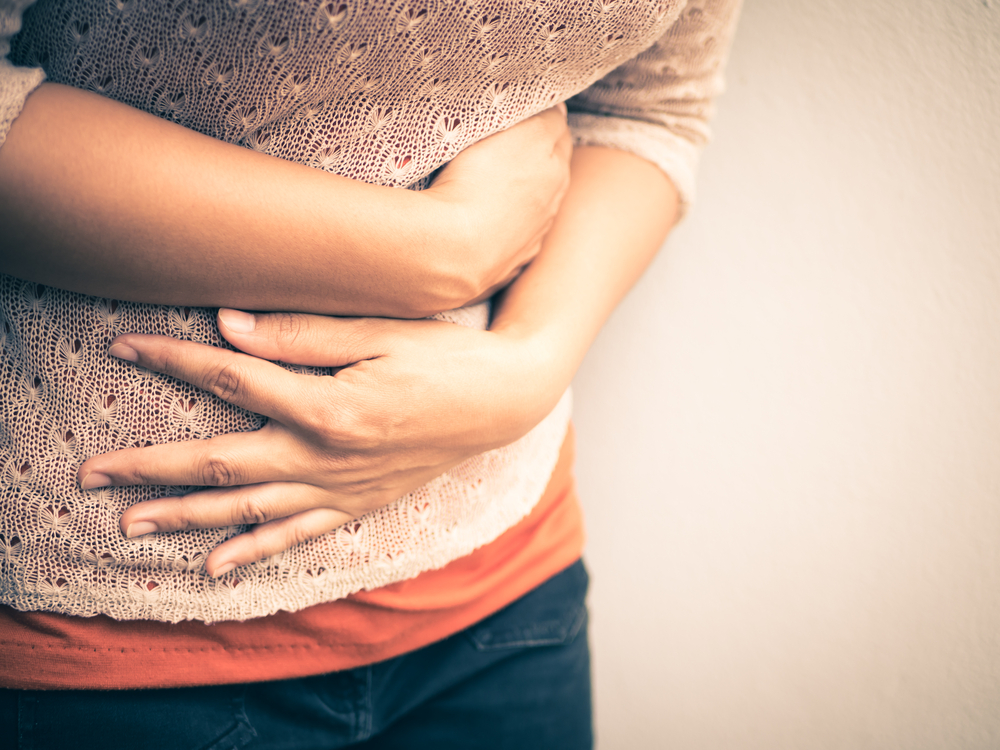- Home
- Blog
- Medical Diets
- Eat to beat flatulence
Eat to beat flatulence
Written by Catherine Saxelby
on Wednesday, 09 February 2022.
Tagged: health, healthy cooking, healthy eating, healthy lifestyle, nutrition, women's health

Flatulence, commonly referred to as ‘breaking wind’, ‘passing wind’ or ‘farting’, is caused by gas in the bowel (large intestine). Ordinarily, the intestines produce about 500–2,000 mL of gas, which is regularly passed out of the anus.
The gas consists of several molecules, including nitrogen, hydrogen, carbon dioxide, oxygen and methane. The smell depends on the ratio of gases present which, in turn, is influenced by the foods we eat.
Symptoms
Passing wind is normal, but the amount varies among individuals and, depending on several factors (see ‘Causes of flatulence’ below). Some people pass wind only a handful of times per day, others up to 40 times, while the average seems to be about 15 times. Symptoms of excessive (or embarrassing) flatulence include:
- smelly flatus
- loud flatus
- passing wind often
- stomach blowing out (abdominal distension)
- rumblings in the lower abdomen.
Some digestive disorders, such as irritable bowel syndrome (IBS), can also produce excess gas. A gastroenterologist can determine if you have this condition.
The cause of flatulence
Intestinal gas is a normal part of digestion. The gas is produced in six ways:
1. Swallowed air
Your mouth is not vacuum-sealed, so you swallow small quantities of air along with food and liquid. The gases are absorbed into the bloodstream from the small intestine, and any excess is allowed to continue its journey through the bowel for expulsion. ‘Air-swallowing’ often occurs in people who are anxious.
2. Normal digestion
Pancreatic secretions neutralise stomach acid and the resulting interaction creates gas (carbon dioxide) as a by-product.
3. Friendly bacteria
Your bowel contains many friendly bacteria, which help digestion by fermenting some of the components of food. This process of fermentation produces gas as a by-product. Some of this gas is absorbed into the bloodstream and breathed out by the lungs. The remainder is pushed along the bowel.
4. High-fibre foods
Fibre from legumes (beans) or whole grains is essential for your digestive system’s health, but it can create excessive gas. The small intestine can’t break down certain compounds, which means extra work for the gas-producing intestinal bacteria, and flatus results. You should introduce a high-fibre diet slowly to allow the bowel sufficient time to adjust to it.
5. Lactose intolerance
If your body is unable to digest the natural sugars found in cow’s milk, it will produce excessive amounts of intestinal gas. This is because your gut bacteria digest the sugars in milk by fermentation, a gas-creating process. The same applies to similar medical conditions, such as IBS, coeliac disease, Crohn’s disease and ulcerative colitis.
6. FODMAPs
This acronym stands for Fermentable Oligo- Di- Mono-saccharides and Polyols. Your intestines are unable to break down these compounds, such as fructans or galacto-oligosaccharides. Similarly to high-fibre foods, these compounds generally increase flatulence – because they aren’t digested, they thus produce more gas and bloating.

Foods to limit
A healthy diet requires plenty of variety. Foods that can produce large amounts of gas also contain essential nutrients and so shouldn’t be eliminated. A better option is to limit their consumption.
Common food culprits
- Most legumes such as baked beans, borlotti beans, chickpeas, kidney beans and lentils
- Artichokes (globe, Jerusalem), garlic (in large amounts), leeks, mushrooms, onions (brown, onion powder, Spanish, white) and spring onions (white part)
- Vegetables such as broccoli, Brussels sprouts, cabbages and cauliflower
- Wheat and rye (in large amounts) such as bread (as an alternative, buy traditional sourdoughs, which have a reduced FODMAP content), breakfast cereals, crispbreads, pasta and pizza
- Fruit such as apples, apricots, mangoes, nectarines, pears, plums, prunes
- Sugar-free chewing gum and confectionery made with sorbitol (420), mannitol (421) or xylitol (967)
- Fizzy drinks
- Milk (including goat’s and sheep’s), custard, evaporated milk, ice-cream, milk powder, soft unripened cheeses (eg. ricotta, cottage) and yoghurt
- Agave syrup, fructose, high-fructose corn syrup and honey
- Fructo-oligosaccharides and inulin
These are only some of the food sources for each of the FODMAPs. For more advice, see an Accredited Practising Dietitian.
You can reduce the gas from legumes by soaking them for a long period followed by boiling, but this comes at the cost of leaching out other water-soluble nutrients. You’ll have to decide if you want to make this trade-off.
Some legumes also stand up to prolonged cooking, which can help break down the oligosaccharides into simple sugars.
Also consider the following:
- Initially, consider taking activated charcoal products or other over-the-counter preparations. Charcoal can bind and trap gas in the bowel, thus helping with the symptoms of excessive flatulence.
- Don’t suddenly increase the amount of fibre in your diet.
- Try ingesting small quantities of acidic liquids with meals, such as lemon juice or vinegar, to stimulate the production of gastric hydrochloric acid. This may increase normal gastric enzyme and acid production, facilitating normal digestion and perhaps limiting intestinal gas production.
- Try ingesting bromelain- or papain-containing supplements (such as raw pineapple or papaya, respectively).
Other things to do
Laxatives
Many laxatives – including lactulose and sorbitol – also cause flatulence and should not be used regularly, except with medical advice.
See your doctor
If you experience unusual flatulence, abdominal pain, changes to toilet habits or any other uncomfortable symptom associated with digestion, you should see your doctor.
Doctors can diagnose lactose intolerance by taking a biopsy of the small intestine. A specialist does this procedure using an endoscope (a camera attached to a thin flexible tube). The patient is given a sedative for this procedure.
The bottom line
Flatulence or farting is not poisonous; it is a natural product of the intestines. Excessive flatulence can be caused by lactose intolerance, eating certain foods or suddenly switching to a high-fibre diet. Passing large amounts of wind, however, can also be a symptom of some digestive system disorders, including IBS. Certain foods and some laxatives can cause flatulence so don’t diagnose this on your own. Seek further medical help.
Foodwatch
The Good Stuff
The Boring Stuff
© 2025 Foodwatch Australia. All rights reserved
Website by Joomstore eCommerce








